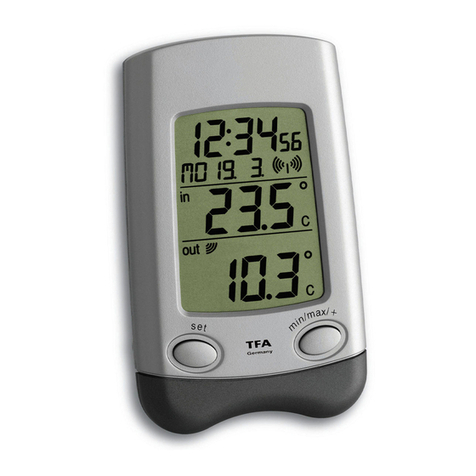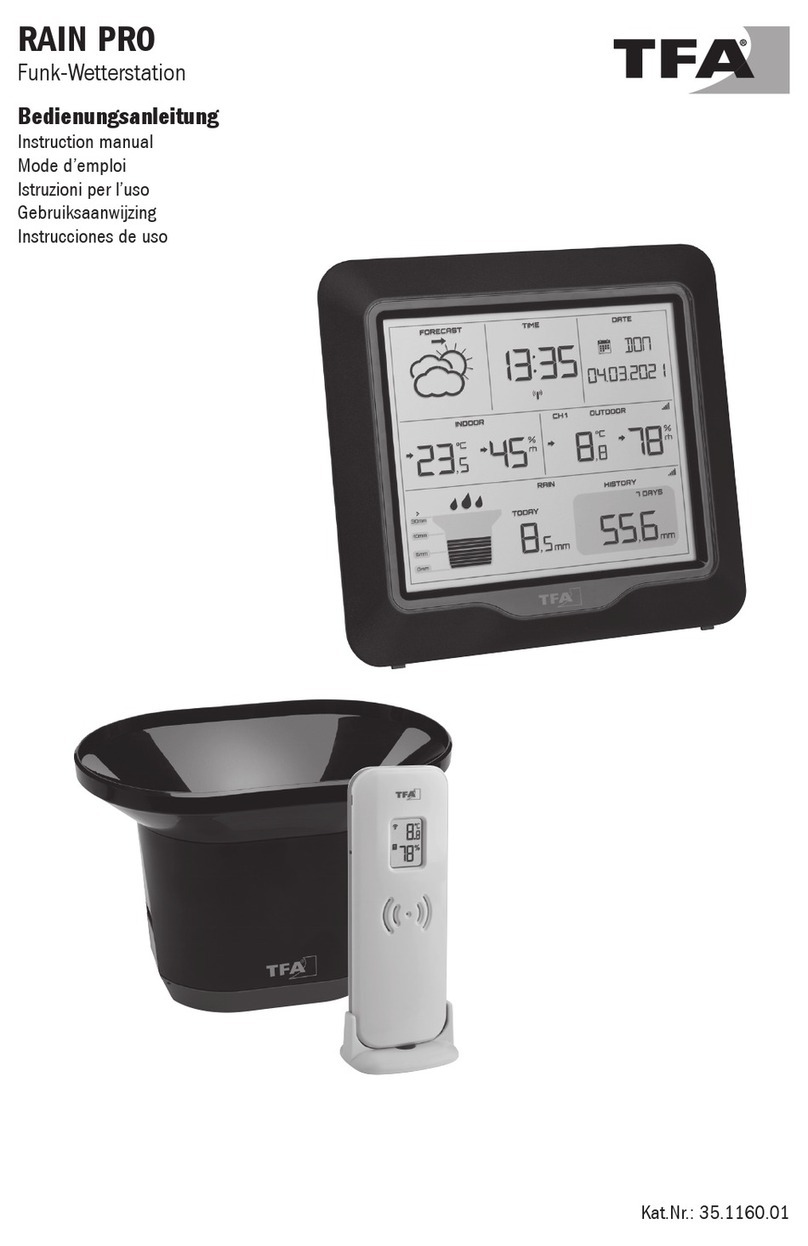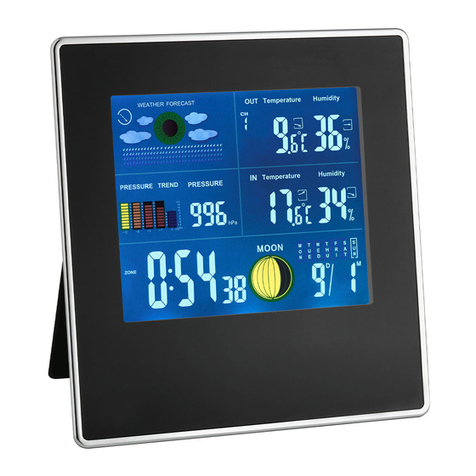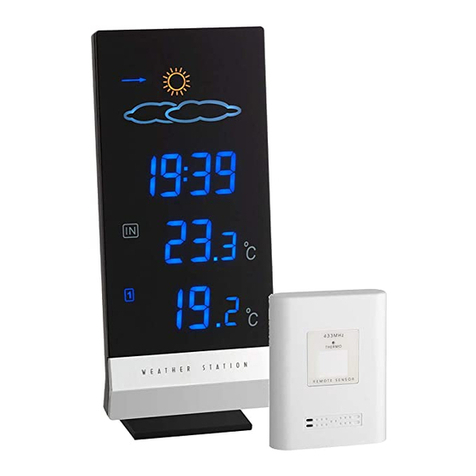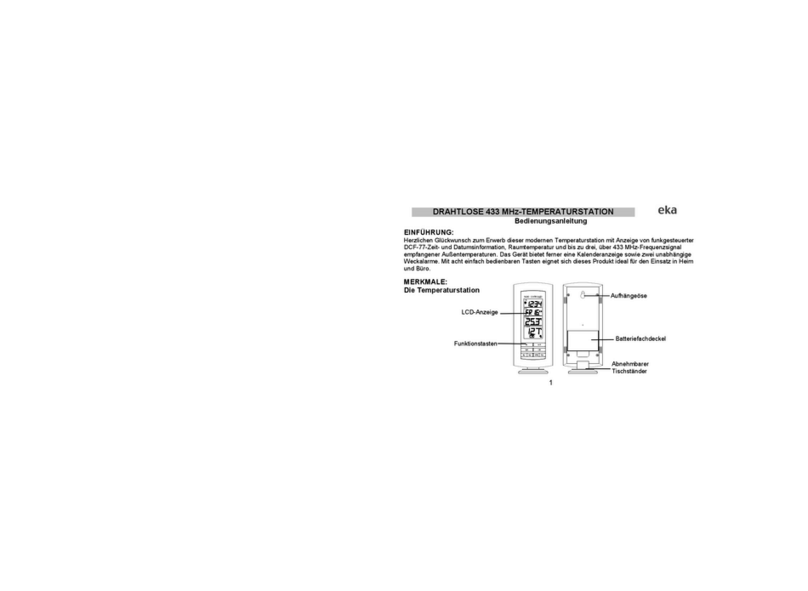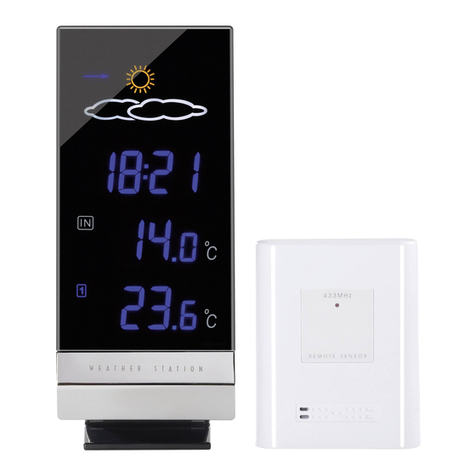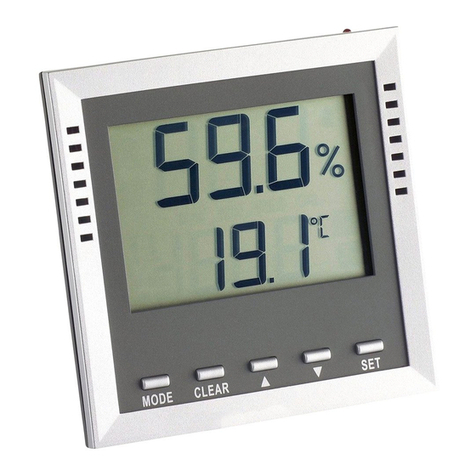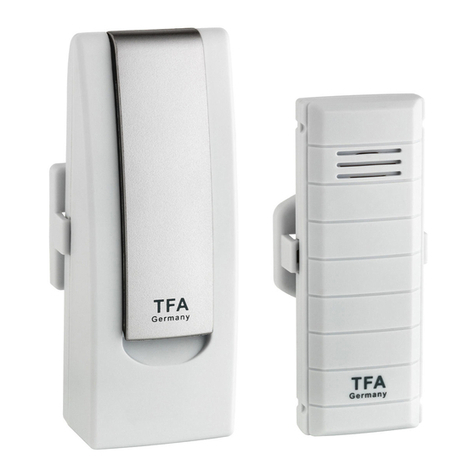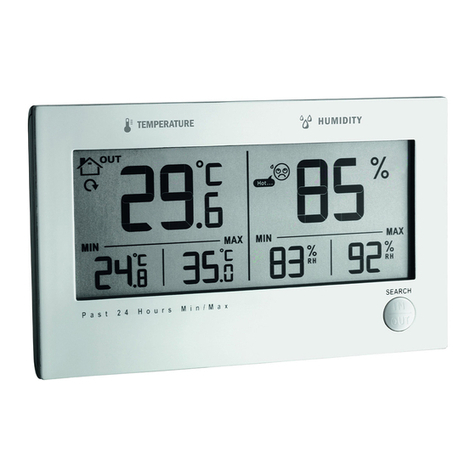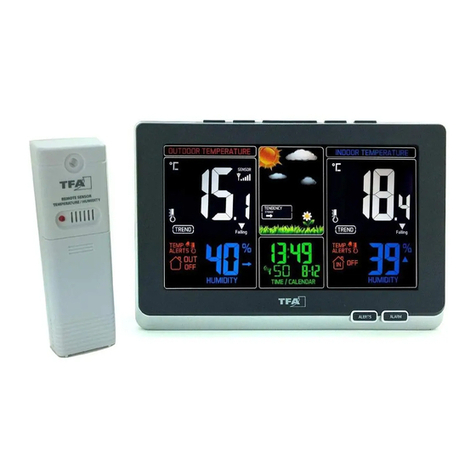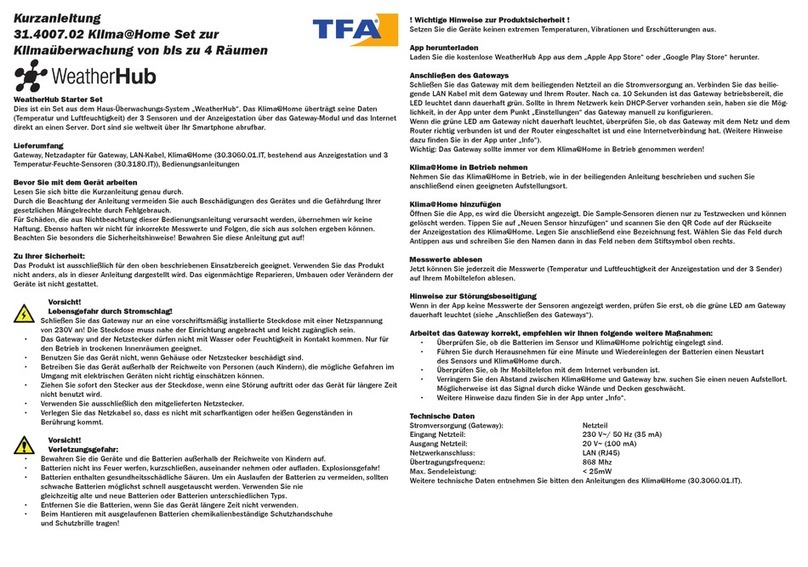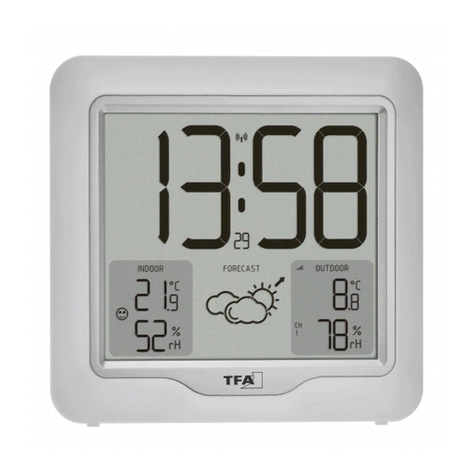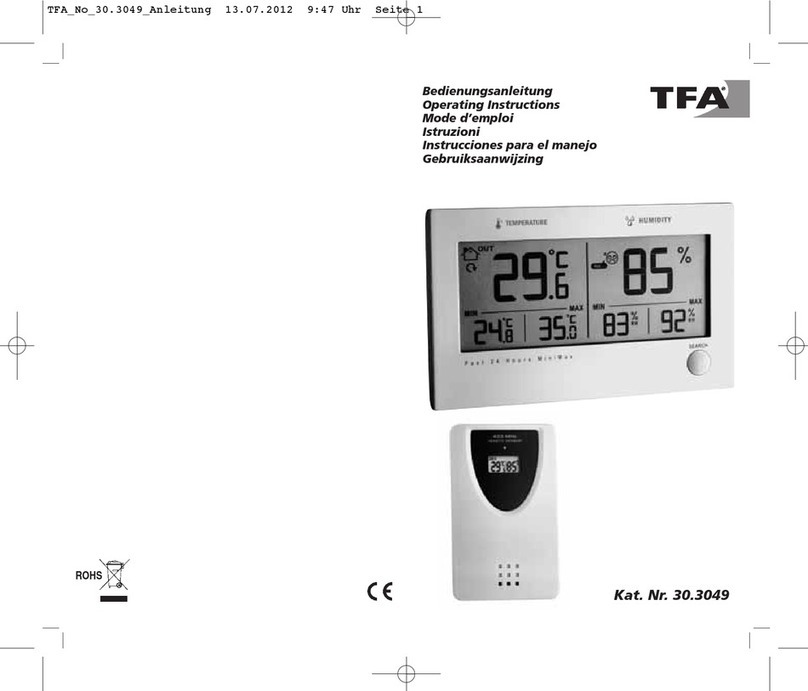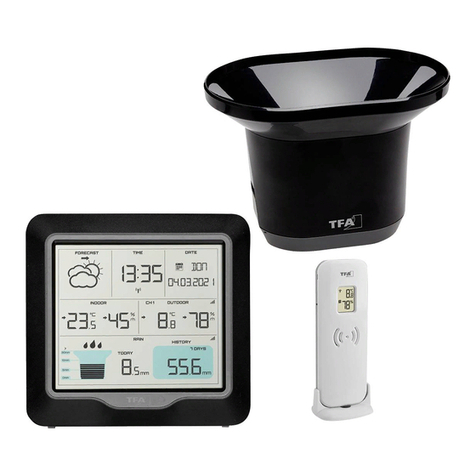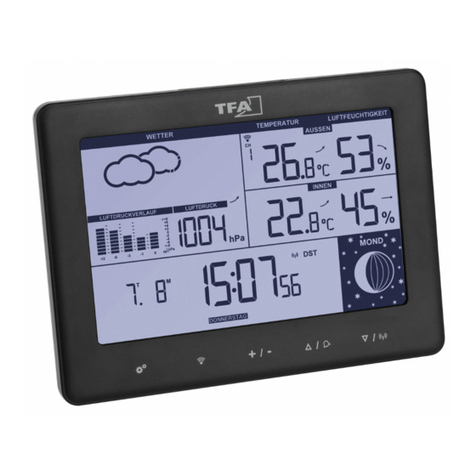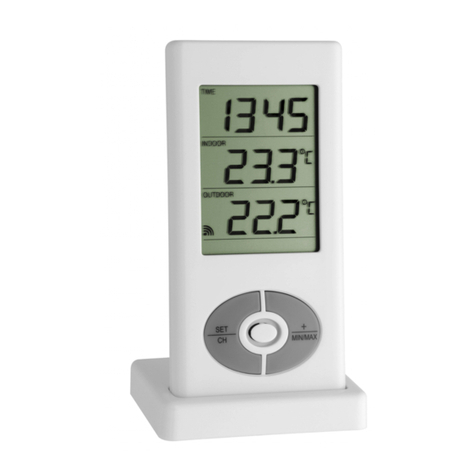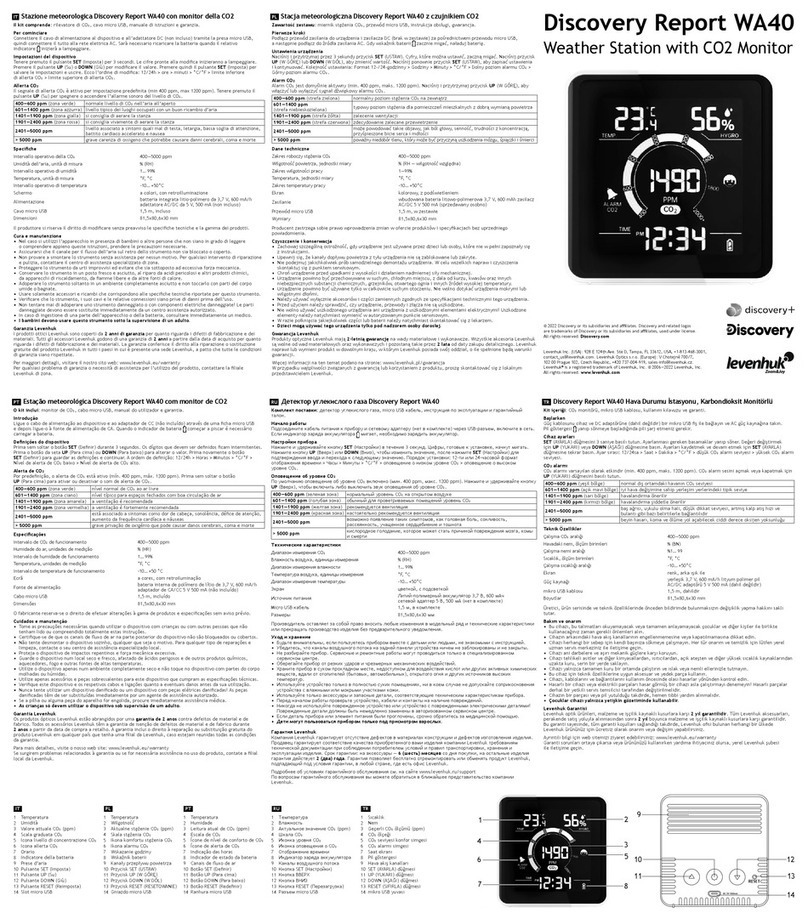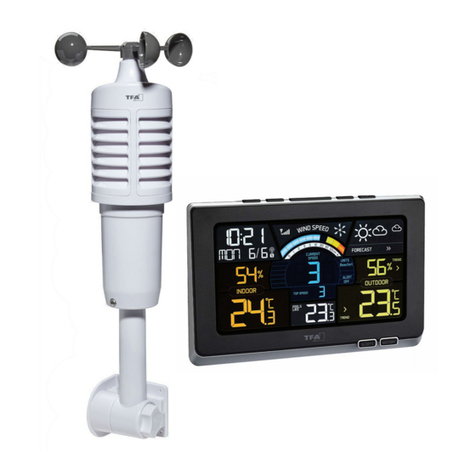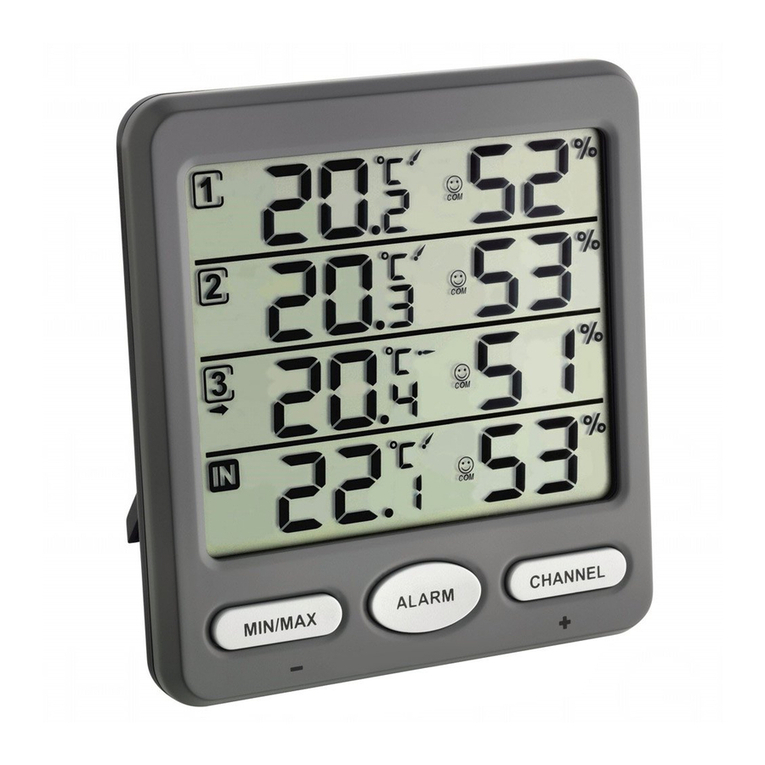
1. Mark the wall using a pen through the holes in the holder 10 obtain the exact drilling
position.
2. Drill holes in the wall at the points marked.
3. Screw holder onto wall.
There is also double sided tape included with the wall mount. This can be used instead of
drilling. Please mount this on a smooth surface instead of a brick one. The surface can,
however, affect the transmission range, for example if the unit is attached to a piece of metal,
it may then either reduce or increase the transmitting range. For this reason, we recommend
not placing the unit on any metal surfaces or in any position where a large metal surface is in
the immediale proximity (garage doors, double glazing etc.). Before securing in place, please
ensure that the Weather Station can receive the signal from the Temperature Transmitter at
the positions that you wish to situate them. The Temperature Transmitter clicks in or out of
the holder easily. When inserting or removing the Temperature Transmitter from the wall
holder please hold both units securely.
Battery Change:
It is recommended to replace the batteries in all units on an annual basis to ensure optimum
accuracy of these units.
Please participate in the preservation of the environment. Return used batteries to an
authorized depot.
CARE AND MAINTENANCE:
- Extreme temperatures, vibration and shock should be avoided as these may cause damage
to the units and give inaccurate forecasts and readings.
- When cleaning the display and casings, use a soft damp cloth only. Do not use solvents or
scouring agents as they may mark the LCD and casings.
- Do not submerge the units in water.
- Immediately remove allow powered batteries to avoid leakage and damage. Replace only
with new batteries of the recommended type.
- Do make any repair attempts to the units. Return it to its original point of purchase for repair
by a qualified engineer. Opening and tampering with the unit may invalidate its guarantee.
- Do not expose the unit to extreme and sudden temperature changes, this may lead to rapid
changes in forecasts and readings and thereby reduce its accuracy.
SPECIFICATIONS:
Temperature measuring range
- Indoor 0.0 °C to +40.0 °C with 0 1 °C resolution (OFL displayed if outside this range)
- Outdoor -29.9 °C to +69.9 °C with 0.1 °C resolution (OFL displayed if outside this range)
Temperature checking intervals
- Indoor every 10 seconds
- Outdoor 2 times in every 10 minutes
Transmitter temperature update every 60 seconds
Transmitting Frequency 43392 MHz
Temperature transmitting range maximum 25 meters (Open space and free from
interference)
Power source
- Weather Station 2 x AAA, IEC LR3, 15V
- Transmitter 2 x AAA, IEC LR3, 15V
Battery life for both units Approximately 12 months (Alkaline batteries recommended)
Dimensions (L x W x H)
